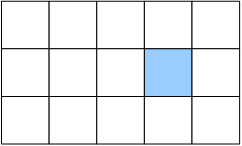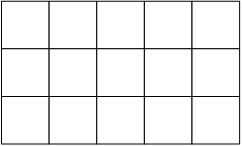- a first-in-first-out approach.
- a last-in-first-out approach.
- the dot operator.
- a member name.
- an index number.
- separated by commas.
- surrounded by brackets and separated by commas.
- separated by commas and surrounded by brackets.
- surrounded by brackets.
- true
- false

|

|
| (a) | (b) |
- double coefficients;
- double coefficients[5, 3];
- double coefficients[5][3];
- double coefficients[3, 5];
- double coefficients[3][5];
- double coefficients[4, 2];
- double coefficients[4][2];
- double coefficients[2, 4];
- double coefficients[2][4];
- double coefficients[4, 2] = 2;
- double coefficients[4][2] = 2;
- coefficients[4, 2] = 2;
- coefficients[4][2] = 2;
- double coefficients[2, 4] = 2;
- double coefficients[2][4] = 2;
- coefficients[2, 4] = 2;
- coefficients[2][4] = 2;
- double coefficients[3, 2] = 2;
- double coefficients[3][1] = 2;
- coefficients[3, 1] = 2;
- coefficients[3][1] = 2;
- double coefficients[1, 3] = 2;
- double coefficients[1][3] = 2;
- coefficients[1, 3] = 2;
- coefficients[1][3] = 2;
- int arr[3][3] = {{52,27,83}, {94,73,49}, {3,6,1}};
- int arr[][3] = {{52,27,83}, {94,73,49}, {3,6,1}};
- int arr[3][3] = {52,27,83,94,73,49,3,6,1}
int scores[50]; int* my_pointer = ...; // initialized to a valid value
Which statements are valid?
- int* spointer = &scores;
- int* spointer = scores;
- scores = my_pointer;
- the function and the function caller accesses the same array.
- the function accesses a copy of the array.
- True
- False
scores.length to find the length of the array.
- True
- False
employee emplist[1000];
- An array with 1000 elements of a structure named employee
- An array with 1000 elements that are pointers to structures named employee
- An pointer to an array with 1000 elements of a structure named employee
- There is insufficient information to determine what the array contains
employee* emplist[1000];
- An array with 1000 elements of a structure named employee
- An array with 1000 elements that are pointers to structures named employee
- An pointer to an array with 1000 elements of a structure named employee
- There is insufficient information to determine what the array employee
employee* emplist = new employee[1000];
- An array with 1000 elements of a structure named employee
- An array with 1000 elements that are pointers to structures named employee
- An pointer to an array with 1000 elements of a structure named employee
- There is insufficient information to determine what the array contains


- not given an index number.
- given the index number 0.
- the first data item to be removed.
- the last data item to be removed.
- bird manybirds[49]; // 49 because the first element is 0
- bird manybirds[50];
- bird manybirds = new bird[49];
- bird manybirds = new bird[50];
- bird* manybirds = new bird[50];
- bird manybirds[49]; // 49 because the first element is 0
- bird manybirds[50];
- bird manybirds = new bird[49];
- bird manybirds = new bird[50];
- bird* manybirds = new bird[50];
- true
- false
- true
- false
int a[10]; which function is able to correctly accept "a" as an argument?
- void func(int m[]) { ... }
- void func(int* m) { ... }
- void func(int m[10]) { ... }
- None of the above
int mat[5][10]; which function is able to correctly accept mat as an argument?
- void func(int m[][]) { ... }
- void func(int m[][10]) { ... }
- void func(int m[5][10]) { ... }
- void func(int m[5][]) { ... }
- None of the above
- for (int i = 0; i < size; i++)
- for (int i = 0; i < size / 2; i++)
- for (int i = 1; i <= size; i++)
- for (int i = 1; i <= size / 2; i++)
int* get_data()
{
int data[100];
// fill the data array
return data;
}for (int i = 0; i < a.length; i++) . . .
- True
- False
void f(foo* data, int x, int y) { . . . }
foo is the name of a fully specified structure and data is a one-dimensional array of foo objects. The variables x and y are valid indexes into data. Write the statements to swap the values stored in data[x] and data[y]. The size of data (i.e., the number of elements) is not important for this problem.char data[100]; int count = sizeof(data) / sizeof(char);
- the value saved in count is the number of elements in the array named data
- the value saved in count is meaningless because sizeof(data) is the size of the variable named data.
char* data = new char[100]; int count = sizeof(data) / sizeof(char);
- the value saved in count is the number of elements in the array named data
- the value saved in count is meaningless because sizeof(data) is the size of the variable named data.
void function(char* data)
{
count = sizeof(data) / sizeof(char);
}
- the value saved in count is the number of elements in the array named data
- the value saved in count is meaningless because sizeof(data) is the size of the variable named data.
void copy(char* destination, char* source, int size)
{
}- the first argument, named scores, is a one-dimension array of doubles that are test scores
- the second argument, named size, is an int that is the number of elements in the scores array
- the return value is the average or mean of all of the test scores